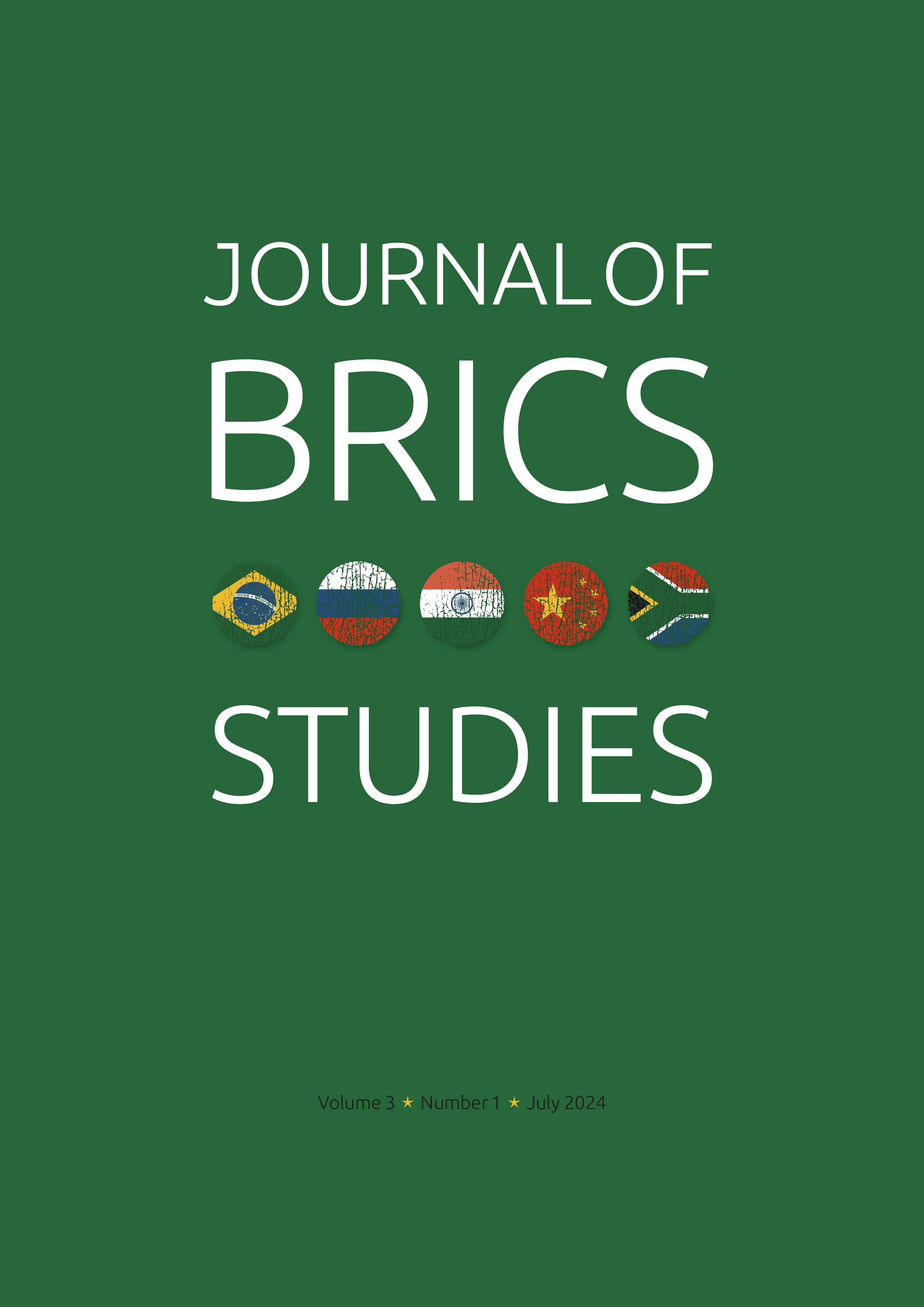Leveraging the BRICS Digital Partnership for Collaborative Digital Governance
Main Article Content
Keywords
Digital Governance, BRICS Digital Economy Framework, BRICS, Digital Economy
Abstract
As the global economy becomes increasingly underpinned by the digital economy, developing countries must grapple with the challenge of digitally transforming their economies while ensuring that no one is left behind. The BRICS countries - Brazil, Russia, India, China, and South Africa - are at different stages of digital development and have adopted varying approaches to digital governance. However, the challenges of the 21st century require a joint approach to e-commerce, internet governance, and the challenges of a digitalising global economy. The BRICS Digital Economy Partnership Framework, launched in 2022, is a positive step towards a comprehensive digital governance framework. This framework promotes cooperation on various digital issues, including cybersecurity, data protection, and e-commerce. This policy brief examines how the framework can be leveraged to benefit the BRICS countries.
Article Metrics Graph
References
Belli, L. (2021). Cybersecurity Policymaking in the BRICS Countries: From Addressing National Priorities to Seeking International Cooperation. The African Journal of Information and Communication, 28, 1-14. https://doi.org/10.23962/10539/32208
BRICS (2020). Strategy for BRICS Economic Partnership 2025. November 2020. http://www.brics.utoronto.ca/docs/2020-strategy.html
BRICS (2022). XIV BRICS Summit Beijing Declaration. June 23, 2022. http://www.brics.utoronto.ca/docs/220623-declaration.html
CETIC. (2022, June 21). Share of households that used the Internet in Brazil from 2018 to 2022 [Chart]. Statista. https://www.statista.com/statistics/1000607/internet-household-penetration-brazil/
CNNIC. (2023, March 2). Penetration rate of Internet users in China from 2008 to 2022 [Chart]. Statista. https://www.statista.com/statistics/236963/penetration-rate-of-internet-users-in-china/
da Silva, L. F., Zitkus, E., & Freire, A. P. (2023). An exploratory study of the use of the Internet and e-government by older adults in the countryside of Brazil. Information, 14(4), 225. https://doi.org/10.3390/info14040225
Hootsuite & We Are Social. (2023, February 13). Internet penetration rate in India from 2007 to 2022 [Chart]. Statista. https://www.statista.com/statistics/792074/india-internet-penetration-rate/
Ignatov, A. (2024) BRICS Agenda for Digital Sovereignty, Modern Diplomacy. https://moderndiplomacy.eu/2024/02/14/brics-agenda-for-digital-sovereignty/
International Trade Centre. (2022). BRICS Digital Economy Report 2022. https://intracen.org/resources/publications/brics-digital-economy-2022
Ismail, S. (2023). ‘A wall of BRICS’: The significance of adding six new members to the bloc, Al Jazeera. Al Jazeera.https://www.aljazeera.com/news/2023/8/24/analysis-wall-of-brics-the-significance-of-adding-six-new-members
Ministry of Commerce of the People’s Republic of China. (n.d.). BRICS Digital Economy Partnership Framework. http://images.mofcom.gov.cn/gjs/202206/20220610182315812.pdf
Moonasamy, A. R., & naidoo, G. M. (2022). Digital learning: Challenges experienced by South African university students during the COVID-19 pandemic. IJTL, 17(2), 76-90. http://www.scielo.org.za/scielo.php?script=sci_arttext&pid=S2519-56702022000200005&lng=en&nrm=iso
OECD. (2020). Going digital in Brazil. OECD Publishing. https://www.oecd-ilibrary.org/sites/e9bf7f8a-en/index.html?itemId=/content/publication/e9bf7f8a-en
Roberts, T., Hernandez, K. and Iff, A. (2021) Key issues in digitalisation and governance, Swiss Agency for Development and Cooperation SDC Policy Note. https://www.shareweb.ch/site/DDLGN/Documents/SDC%20Digitalisation%20FINAL%2001VI21.pdf
Statista. (2022, June 15). Internet user penetration in Brazil from 2018 to 2027 [Chart]. https://www.statista.com/forecasts/292757/brazil-internet-user-penetration
Statista. (2022, June 15). Internet user penetration rate in Russia from 2018 to 2027 [Chart]. https://www.statista.com/statistics/567578/predicted-internet-user-penetration-rate-in-russia/
The Economist. (2022, June 6). Internet inclusivity index in Brazil in 2022 [Chart]. Statista. https://www.statista.com/statistics/1087939/brazil-internet-inclusivity/
The Economist. (2022, June 9). Internet inclusivity index across India in 2022, by category (rank out of 120) [Chart]. Statista. https://www.statista.com/statistics/1232322/internet-inclusivity-index-by-category-india/
Vipra, J. and Somayajula, D. (2024) Access to the Digital Economy in BRICS countries, Vidhi Centre for Legal Policy Digital Economy Blog Series: Part 1. https://vidhilegalpolicy.in/blog/access-to-the-digital-economy-in-brics-countries/
Xi, J. (2022, June 23). Fostering High-quality Partnership and Embarking on a New Journey of BRICS Cooperation [Remarks]. http://brics2022.mfa.gov.cn/eng/tpxw/202206/


